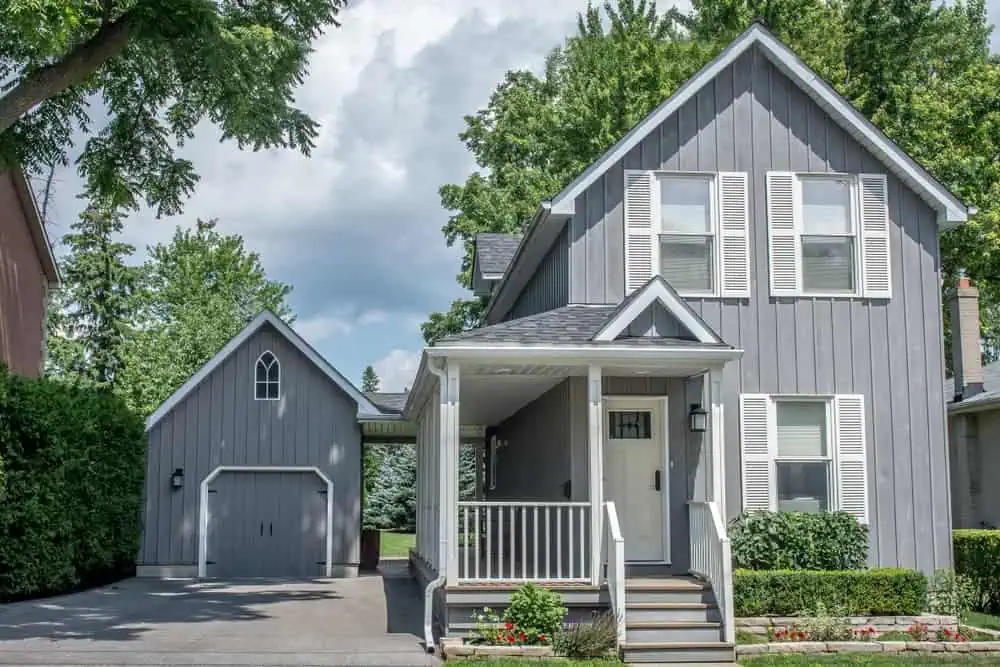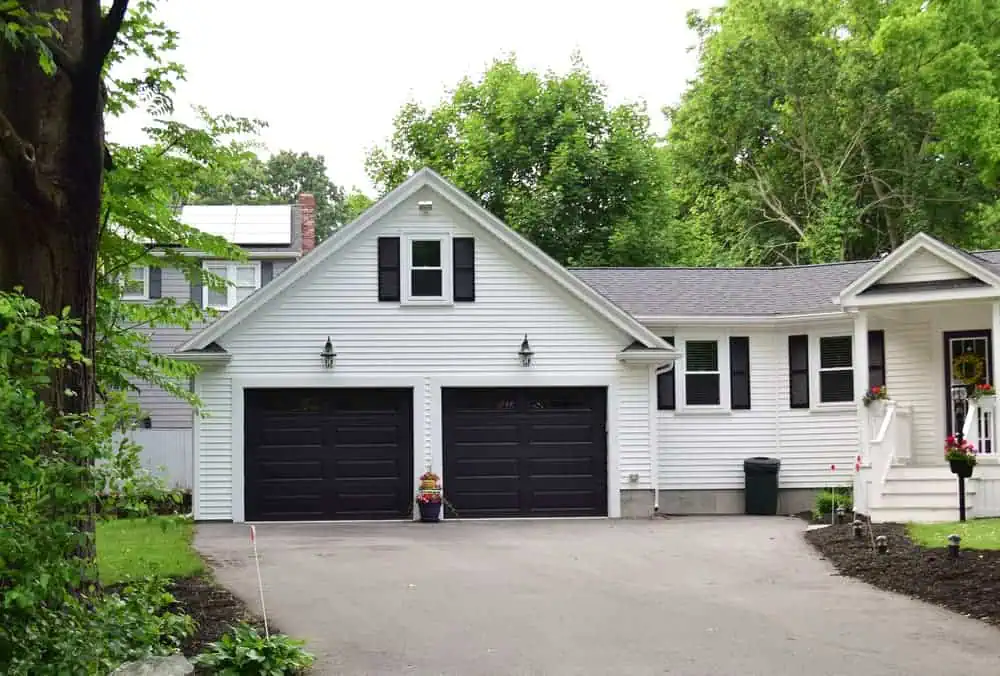How to Add a Bonus Room Above a Garage
Over-the-garage additions have become a very popular choice for homeowners in recent years. This is largely due to the fact that they offer an easy way to add space to the home without expanding its footprint. Whether you want to add on a bedroom, a playroom for the kids, or even a “man cave,” there are tons of options for how to use your garage bonus room.
But is this versatile addition right for your home? If you’re thinking about getting in touch with local ADU contractors in San Diego, read on. Below, we’ll explore some pros and cons of a garage bonus room, as well as a step-by-step guide for building it.
Are bonus rooms above the garage worth it?
Like any other home addition option, adding an accessory dwelling unit above your garage also comes with some pros and cons. Before you start planning, let’s delve deeper into these potential benefits and challenges. Here are some of the top decision influencers:
Benefits
1. No additional footprint
Debatably the biggest perk of opting for an above-garage addition is that it doesn’t increase a house’s footprint. So, by building up rather than out, you can easily add to the existing structure of your home by building up. This way, the size of your lawn and property square footage remains exactly the same.
2. Cost-effectiveness
Another advantage of building a bonus room over your garage is that when you make the necessary structural additions, such as adding new support posts, beams, and concrete footings, you don’t have to worry about destroying a finished room below. Since you’re building over the garage, the cost of remodeling the existing space as you add new structural elements is minimal.
3. Enhanced curb appeal
A well-designed bonus room above your garage can have a drastic impact on your home’s curb appeal. These additions often face the street and, given their size, can make a dramatic visual impact and maybe even increase your home’s resale value.
Difficulties
1. Seamless design
Since the above-garage additions are so sizeable, it’s all the more important for the bonus room to seamlessly blend with the exterior facade of your home. This may be difficult to achieve since exterior finishes are often older than two decades and the newly built space is, well, brand new. Not to mention that finding the siding, shingles, and other materials to match what you already have can be a real challenge.
Luckily, there are a few strategies to make the addition look as seamless as possible: try to match architectural elements like roof lines and windows as much as possible, add details to the facade like the trim, and if possible, try to match the project with an exterior upgrade for the entire home.
2. Possible Restrictions
Another potential issue with building above your garage is the possibility of running into restrictions. Before you move forward with any sort of planning, check with the city or local jurisdiction to see if they have any height restrictions for a detached garage. Some of them may require things like additional parking on-site, and others have specific rules about windows and doors if the garage is too close to the property line.
3. Building a Stiff Floor
Considering the size of a typical two-car garage, usually at least 24 feet by 24 feet of long, open space, it may be a challenge to build a proper floor on top. The floor needs to support the space above properly, follow all codes, not bounce, and not interfere with the car space below. In some cases, achieving all that may prove harder than you think.
How much does it cost to add a bonus room above a garage?
As with any other home renovation, the financial aspect is one of the first things homeowners ask about. However, costs can vary depending on several factors, and we’ll explore some to help you budget accordingly.
Influencing factors
1. Size
Probably the biggest factor when determining the overall cost of your renovation is the size of your bonus room. Larger rooms naturally require more materials and labor, which will be reflected in the final price. Construction costs are estimated by square foot, so it’s best to have a clear idea of the desired size before starting the planning process.
2. Scope of Work
Another significant factor is the scope of work that needs to be done in the space. Since you’re building a brand new room on top of the garage, the space may require extra insulation or wiring that an addition in a different part of the home might not. To accurately estimate the scope of work, consider the specific requirements of your bonus room.
3. Materials
Aside from the size and scope of work needed, the materials you choose can also significantly impact the overall costs. The good news is that in this day and age, finding cost-efficient materials is easier than ever. Many budget-friendly options even mimic the look or properties of high-end materials. For example, engineered plank vinyl is much less expensive than true hardwood, but looks almost identical from the outside.
4. Labor
When it comes to personnel, this is definitely an area where you do not want to skimp. While it’s true that you can handle some tasks on your own, such as laying down manufactured flooring or installing drywall, significant structural and design changes require professional expertise. For an addition that turns out to be exactly what you envisioned, you definitely want to work with a contractor or an architect.
The average cost
For all the reasons mentioned above, the cost of finishing a bonus room above your garage can vary. Interested in learning about the approximate cost? Based on average costs for all the finishing pieces, it comes to about $35 per square foot. Keep in mind, however, that this is just an average, and any of the aforementioned factors may impact it significantly.
How do I add a room to an existing garage?
Finally, let’s dive into a step-by-step guide for creating a bonus room that meets your needs and complements your home’s style:
1. Think from the outside in
When trying to imagine your dream addition, sometimes it helps to think from the outside in. Meaning, since over-garage additions are highly visible and quite large, think about what you want it to look like from the outside first. Use that idea as a foundation, and then consider how that final look affects the structure. As mentioned earlier, the design of your bonus room should seamlessly blend with the existing facade, so this is a good starting point.
2. Verify the structure
Once you have a design idea in mind, it’s time to assess your home’s structure and think about how to build on it. A qualified engineer will evaluate whether the existing structure can handle the added weight of a bonus room. This typically involves digging several holes in the foundation to evaluate its condition and depth and testing the strength of the framing. If they find out that the structure isn’t supportive enough, you’ll need to address it before any construction begins, which can be quite expensive.
3. Check against safety codes
Safety concerns and regulations should be addressed early in your planning process. For example, per building code, your garage’s walls and ceiling need to be covered with Type-X drywall, which is 5/8 inches thick and fire-rated, before you add a room above. You must also ensure that all drywall penetrations, such as those for electrical conduit, are sealed tightly.
As you can see, these codes often mandate specific requirements for garage additions. They may seem bothersome but always remember that they exist for safety reasons. So, take time to research all relevant local regulations and codes, and make sure you comply with them when designing your new addition.
Walls
The walls of your bonus room are essential for both aesthetics and functionality. Begin by ensuring proper insulation to create a comfortable and energy-efficient space. Standard insulation is typically required, but you may want to consider adding extra for enhanced comfort and reduced energy bills. Once insulated, install drywall to create a finished look and prepare the walls for paint, wallpaper, decals, shiplap, or any other decorative touches.
Floors
There are a few factors you’ll need to consider when it comes to the floors of your bonus room. First of all, the basic frame of your addition won’t tolerate regular use and heavy foot traffic, so you’ll need to reinforce the floor joists. Next, you should add insulation to minimize noise transfer and improve temperature control.
You can then boost these properties with your choice of flooring material. Carpeted flooring adds another level of noise insulation but requires a subfloor. Hardwood flooring won’t be as sound-efficient, but its sleek appearance, versatility, and long-term cost-efficiency make it a favorite.
4. Consider plumbing & utilities
If you want to add a bathroom or something like a laundry room in your above-garage addition, you’ll need to consider utilities and plumbing. Extending pipes and drains can be challenging, especially if the existing infrastructure is located far from your garage. In most cases, it’s possible but can lead to noticeably higher construction costs.
Another important consideration is that these pipes need to stay in heated areas to prevent freezing during extreme weather. Don’t worry, because a skilled contractor will be familiar with these requirements and can help you plan accordingly. Additionally, they can help you plan your electrical setup.
Your contractor can also assist with planning electrical needs. While your garage is probably already connected to the existing power grid, it’ll need some additional wiring to meet the new space’s electrical demands.
5. Make plans that fit the space
Planning a bonus room offers so many possibilities, but remember to stay realistic. While it’s tempting to dream big, you’ll need to work within the constraints of your garage’s size and shape. For example, if you have a small, single-car garage, adding two bedrooms and a bathroom in the bonus space is either just a bad idea or entirely impossible. But if you have a spacious, two-car garage, then designing a functional living space above is a great option.
6. Create the access points
When it comes to access points that stay inside the garage, they should be designed to not take up a lot of space. Here are the popular options:
Interior ladder
Probably the most space-efficient option is a ladder, a common choice for lofts that can be easily moved around as needed. However, if the point of this addition is to create an in-law suite, a ladder likely isn’t the best option.
Interior staircase
Another common option is the traditional straight staircase. This option is very stable and easy to use, but it definitely takes up the most space. If you’re looking for a middle ground, spiral staircases have gained popularity in recent years and only take up a small circle in the corner of your garage.
Exterior staircase
If you want to maximize the interior space in your garage and your bonus room, you can also choose to set up the access point on the outside. This can be a traditional outdoor staircase made of sealed wood or a modern spiral option. Both options come with a more casual look and feel, so take that into account when considering the aesthetic of your new addition.
Who are the most reputable ADU contractors in San Diego?
Interested in a garage bonus room, another ADU project, or any other type of remodeling? Remodel Works stands ready to help with remodeling services tailored to your needs and preferences. Our skilled team takes pride in outstanding craftsmanship and uses only top-notch materials and time-tested methods for each project we take on.
Whether you need us in Little Italy, elsewhere in San Diego, or beyond, our in-depth knowledge of local regulations and architecture will ensure your project flows seamlessly. Contact us today and let’s discuss the possibilities!













